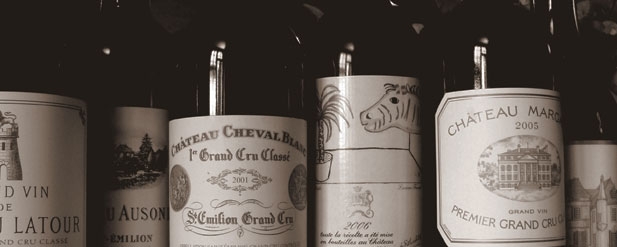
Bordeaux 2011 in bottle
Following 2010 was never going to be an easy act. Following 2009 and 2010 was going to be an impossible act. Arguably, no-one really wanted a vintage that could live up to these immense years. Could anyone handle another ‘vintage of a lifetime’? I for one had already encountered four, which was making me feel quite old; our poor Chairman must be feeling positively ancient!
Tom Jenkins
It was immediately obvious to all that 2011 was not a rival to 2009 and 2010, but this should not in itself be a reason to condemn it. Aside from the small wines, 2009s really aren’t ready for drinking. 2010s will take longer still, so either we rely on our vast reserves of ‘61s and ‘82s until our 2009s and 2010s hit their straps, or we’re going to need a few vintages to fill in. I for one have been thoroughly enjoying some 2007s recently, so much so, that I feel inspired to write a blog on them. ‘Less-good vintages’ definitely have a place. But before anyone starts reading too much between the lines, 2011 and 2007 don’t have that much in common.
Inside the packed Opera House we found a relatively consistent group of wines. Sure there were ups and downs, but this is a big tasting – there were plenty of turkeys at the corresponding 2009 and 2010 tastings. Starting with the Pessac reds, we found plenty of sweet fruit. In fact we were quite surprised by how ripe and generous some of these wines were. The usual stars, Domaine de Chevalier, Smith Haut Lafitte and Haut Bailly were all delicious, but those who like the exotic would be advised to go for Malartic Lagraviere. Bravo to the Bonnies – a terrific wine that I’d very much like to have in my cellar!
St Emilion is a region I approach with trepidation. Much to my surprise, this flight provided some of the most exciting and polished wines at the tasting. John Kolasa at Canon continues his good work, Troplong Mondot was massive yet quite seductive and Canon la Gaffelière was a complete surprise package – either my palate has completely changed or their 2011 is demonstrating a refinement and elegance I don’t normally associate with this estate. This is without doubt the smartest Canon la Gaffelière I can remember. The standout wine though was Clos Fourtet. Their 2009 and 2010 received high praise from Parker and this is a very worthy successor.
In Pomerol, Gazin has firmed up; this is one of the few wines at the tasting that had real structure. This may require a few years, but will be a stunner. La Conseillante was as understated and distinguished as usual. In the Medoc, some little wines such as Beaumont, Chasse Spleen and Poujeaux all showed well. The soft, approachable tannins and ample sweetness of the vintage make these wines more accessible than ever. Brane Cantenac and Rauzan Segla were the stars of Margaux – no surprises here then… St Julien and Pauillac were not as consistent as we remembered them. There are some real highs: Leoville Poyferre, St Pierre, Gloria, Gruaud Larose, Pichon Lalande, Grand Puy Lacoste and Pichon Baron, but there were a few question marks over Lynch Bages and Leoville Barton. Both showed brilliantly from barrel, so maybe they are just in a difficult adolescent stage.
Our view of the Sauternes and Barsacs has not really changed. The wines are big and rich, but are not overly complex. In our view, those who declared 2011 to be an excellent year for sweeties slightly missed the mark. Some wines have definitely improved in barrel, but this is not another 2001. Our pick again was the wonderful Doisy Vedrines. Olivier’s wine has real tension and complexity. The bouquet is a melting pot of tropical fruit; the palate is awash with noble flavours and the acidity is remarkable. This is a Barsac I really want to drink!
In summary, there is much to like about this group of reds. There are good colours, lots of sweet, seductive, mid-palate fruit, soft tannins and freshness. They remind me of how 2001s started showing after a few years. It isn’t a vintage to lay down for decades, but the wines will give lots of pleasure. In the current, subdued market, it is difficult to make a compelling case to buy these, however, as they become available, they will be some of the best priced examples of physical stock, and they will drink well young. So while people wait for 2009s and 2010s to come around, the 2011s could be the answer.
61 St. James's Street, London SW1A 1LZ
Reg. Company No: 68576
AWRS URN: XPAW00000105319
Please do not share with anyone under the legal purchase age for alcohol.
Drink Responsibly www.drinkiq.com
© Justerini & Brooks 2024. All Rights Reserved.